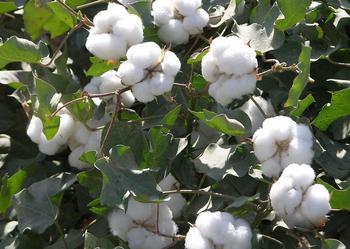Global cotton market oversupply for 4 consecutive years
 In 2013/14, the global cotton production is estimated at 25.6 million tons, with a consumption of 24 million tons; the global trade volume is 9 million tons; the ending stocks reached a record high of 19.8 million tons. From the end of 2010/11 to 2013/14, global production has been accumulatively higher than the consumption of 11 million tons, and the global ending stocks have increased from 9.90 million tons to 1.81 million tons, nearly doubling the increase. Global cotton production in 2013/14 is expected to exceed consumption for the fourth consecutive year.
In 2013/14, the global cotton production is estimated at 25.6 million tons, with a consumption of 24 million tons; the global trade volume is 9 million tons; the ending stocks reached a record high of 19.8 million tons. From the end of 2010/11 to 2013/14, global production has been accumulatively higher than the consumption of 11 million tons, and the global ending stocks have increased from 9.90 million tons to 1.81 million tons, nearly doubling the increase. Global cotton production in 2013/14 is expected to exceed consumption for the fourth consecutive year. In the past two years, the Chinese government adopted a temporary cotton purchasing and storage policy and a large amount of cotton became reserve cotton. The 2012/13 China total ending inventory is expected to be 9.4 million tons, of which private companies hold about 1.6 million tons. China's cotton consumption in 2012/13 is estimated to be 8.3 million tons, which means that the total ending inventory can be used for more than a year, and the private company's inventory can support more than two months, enough to meet the needs of the new flower market before 2013/14. / September cotton market.
In April of this year, the Chinese government stated that it will continue its cotton collection and storage mechanism in 2013/14. The purchase price is 20,400 yuan/ton, which is about 1.5 US dollars/lb. By March next year, China’s cotton reserves are expected to reach 15 million tons, which is expected to fall to 12 million tons after the reserve cotton auction in August next year. Therefore, of the global ending inventory of nearly 20 million tons in 2013/14, only 8 million tons are commercial inventories and 6 million tons are in countries other than China. Given the tight stocks in countries outside of China, the 2013/14 Cutrum A Index is expected to increase from the 2012/13 annual average of 88 cents/lb to more than US$1.
China's cotton production in 2013/14 is expected to remain unchanged from the previous year. Supported by favourable monsoon and expected output increase, the output of Indian cotton may increase by hundreds of thousands of tons this year; the US cotton production is expected to decline due to the dry weather in some cotton-producing regions. , And corn and soybean prices rose; cotton production in Brazilian cotton, Uzbek cotton and other countries is expected to be the same as last year.
In 2007/08, the global textile industry used nearly 27 million tons, which is expected to be only 24 million tons in 2013/14. Until August of this year, China's polyester prices were still 20 cents/lb higher than the Cortux A Index, which greatly weakened cotton's competitiveness in the fiber market. Unsurprisingly, the biggest drop in the use of textile companies occurred in China (reduced by nearly 3 million tons since 2007/08). In 2013/14, the consumption of textile enterprises in other countries is expected to exceed 15.8 million tons in 2007/08.
The development trend of the global cotton industry in the coming years will depend to a large extent on the relevant policies of the Chinese government. Obviously, the existing cotton purchasing and storage model cannot continue. Once the government stops purchasing reserve cotton, cotton prices will fall back. If you gradually reduce the acquisition, the cotton price will remain low for many years; if you stop the acquisition quickly, the cotton price will also fall rapidly. The recent days of the cotton industry are certainly not too good.
Velvet Embroidery Fabric,Metallic Yarn Embroidery Velvet Fabric,Laser Cut Embroidery Velvet Fabric,Sequins Embroidery Velvet Fabric
SHAOXING MINGHEE EMBROIDERY CO,LTD , https://www.minghee-china.com